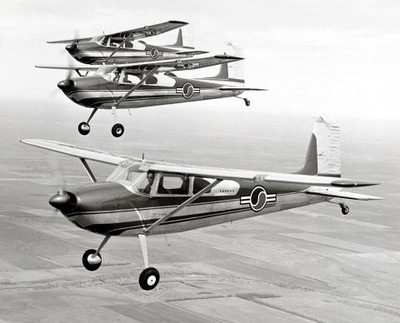Pilot and Single Passenger Killed in Alaska Mishap
The NTSB has released its preliminary report on a 16 June 2023 accident in which a Cessna 180, registration N91361, was substantially damaged and its pilot and single passenger killed. The aircraft was operated as a non-scheduled charter flight under Part 135 of the Federal Aviation Regulations.

The accident-aircraft was operated by Golden Eagle Outfitters, Inc. and dispatched to pick up four hunters from a remote airstrip and fly such to Unalakleet Airport (UNK) in west-central Alaska.
Approximately one-hour prior to the mishap, the pilot of the accident-aircraft departed with two passengers—having informed the remaining two hunters he would return in short order to pick them up.
Upon returning, the pilot boarded one of the hunters and numerous articles of hunting gear, then arranged to return for the final hunter and the remainder of the expedition’s equipment and provisions.
The hunter remaining at the remote airstrip stated prevailing winds “were gusting and changing a lot” and proceeded to increase steadily over the hour he passed waiting for the Cessna 180’s return. The individual further stated he’d flown, formerly, with the pilot of the accident aircraft and had watched him perform numerous successful takeoffs and landings from the airstrip.
Subject airstrip is some 750-feet in length and situated atop a down-sloping, rock-and-grass-covered ridgeline. Arriving aircraft, as a matter of convention, land uphill on an approximate heading of 060-degrees magnetic. Conversely, departing aircraft takeoff in the opposite direction, downhill, on an approximate 240-degree magnetic heading. The practice of opposing flow to a single runway is not uncommon at mountain airports.
The witness reported having previously observed departing aircraft dip below the ridgeline at the airstrip’s southwesterly terminus, then climb back into view as they left the valley.
The witness set forth he’d watched the accident aircraft throughout what appeared to be a normal, southwesterly takeoff-roll, then turned away—having deemed the departure routine and no longer deserving of attention.
Failing to hear the engine noise characteristic of a climbing aircraft, the witness hastened to the ridge’s edge and observed the Cessna 180 in a state of ruin on the tundra some three-hundred-feet below.
The witness transmitted an SOS alert from his personal GPS tracker, then hiked to the accident site for purpose of searching for survivors.
A helicopter pilot responding to the SOS arrived on scene approximately 45-minutes after the accident. The pilot called the day’s winds “unusual,” describing such as alternating continuously between light-and-variable and gusting to ten-to-12 knots from the south.
Examination of the area revealed a small cluster of trees approximately five-hundred-feet south of airstrip’s departure end. One 12-foot tree within the copse was fractured some four-feet above its base. The four-inch-diameter tree’s upper portion was found adjacent its trunk and observed to be marred with fragments of red paint matching the accident-aircraft’s livery.
Examination of the Cessna 180’s wreckage suggested the aircraft had impacted the tundra in a steep nose-down, wings-level attitude approximately 1,200-feet from the broken tree. The aircraft’s wings were displaced by impact, with the right wing’s leading-edge uniformly crushed aft along its span. The upper and lower wing skins were crushed similarly aft in compression.

Flight control continuity was established through several breaks to the flight control surfaces. The entirety of the breaks and separations across the aircraft’s fuselage, wings, and empennage were consistent with impact and overstress failure. The Cessna’s engine was discovered, inverted, behind the aircraft’s left wing. The propeller hub was fractured and the propeller blades separated therefrom.
The aircraft’s right horizontal stabilizer and elevator exhibited no leading-edge impact signatures and the elevator remained attached. The left horizontal stabilizer displayed a concave dent perpendicular to the airfoil’s leading-edge, approximately one-foot outboard of the stabilizer root. Tree sap and embedded tree fibers were observed in the leading-edge of the horizontal stabilizer.
The accident-aircraft and its contents were recovered and retained for further examination.
 ANN's Daily Aero-Term (05.16.24): Instrument Runway
ANN's Daily Aero-Term (05.16.24): Instrument Runway ANN's Daily Aero-Linx (05.16.24)
ANN's Daily Aero-Linx (05.16.24) Airborne 05.15.24: Ghost Sq MidAir, B-2 Junked, Dream Chaser Readies
Airborne 05.15.24: Ghost Sq MidAir, B-2 Junked, Dream Chaser Readies Airborne 05.10.24: Icon Auction, Drunk MedEvac Pilot, Bell ALFA
Airborne 05.10.24: Icon Auction, Drunk MedEvac Pilot, Bell ALFA Airborne Affordable Flyers 05.16.24: PRA Runway, Wag-Aero Sold, Young Eagles
Airborne Affordable Flyers 05.16.24: PRA Runway, Wag-Aero Sold, Young Eagles




